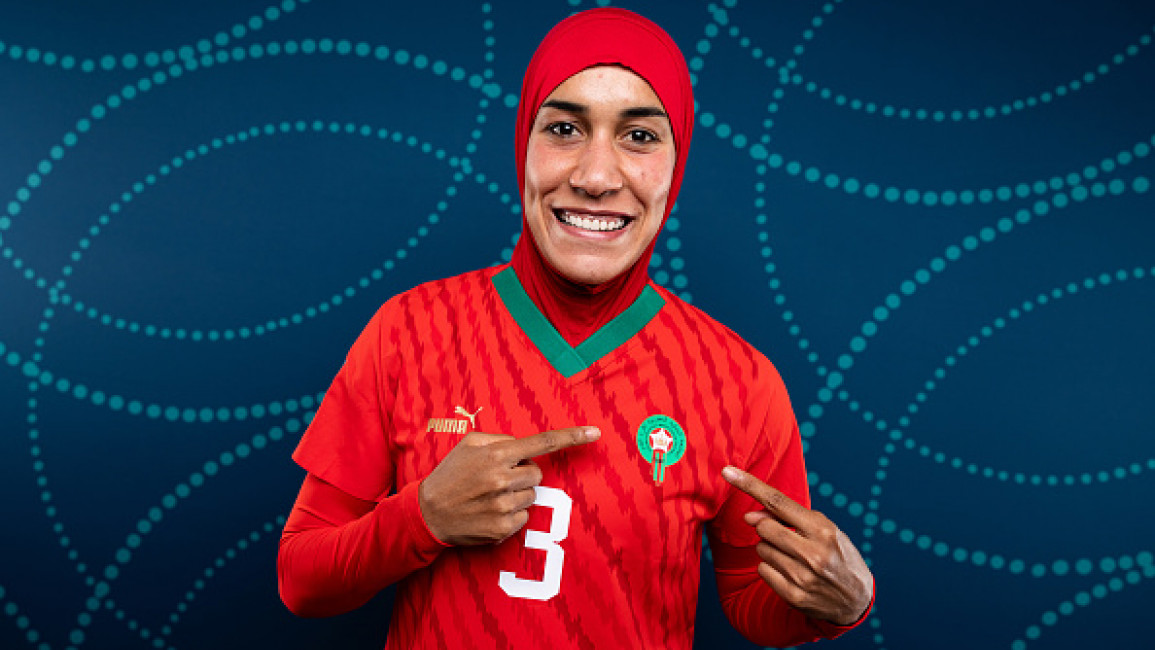Morocco's Nouhaila Benzina set to make Women's World Cup history as first hijab-wearing player
When Nouhaila Benzina steps onto the field for Morocco’s first match of the Women’s World Cup against Germany, she will make history - and not just as a player for the first Arab or North African nation ever in the tournament .
The 25-year-old defender will be the first player to wear the Islamic headscarf at the senior-level Women’s World Cup. She and the Atlas Lionesses face two-time World Cup champions Germany in Melbourne, Australia, on Monday.
"Girls will look at Benzina (and think) 'That could be me,'" said Assmaah Helal, a co-founder of the Muslim Women in Sports Network said of the hijab. "Also the policymakers, the decision-makers, the administrators will say, 'We need to do more in our country to create these accepting and open and inclusive spaces for women and girls to participate in the game.'"
Benzina, who plays professional club soccer for the Association’s Sports of Forces Armed Royal - the eight-time defending champions in Morocco’s top women’s league - hasn’t yet been made available to speak to reporters here at the Women’s World Cup. In recent weeks, she has shared social media posts from others about the history-making nature of her World Cup appearance.
"We are honored to be the first Arab country to take part in the Women’s World Cup," Morocco captain Ghizlane Chebbak said on Sunday, "and we feel that we have to shoulder a big responsibility to give a good image, to show the achievements the Moroccan team has made."
25-year old Moroccan 🇲🇦 defender Nouhaila Benzina is set to become the first hijab-wearing player to feature at a FIFA Women’s World Cup.
— Usher Komugisha (@UsherKomugisha) July 19, 2023
The 9th edition kicks off tomorrow through to August 20 in Australia and New Zealand.
Debutants Morocco open against Germany 🇩🇪 on Monday. pic.twitter.com/bwTmpeTwpU
Had Morocco qualified for the Women’s World Cup a decade ago, a player who wanted to wear the hijab during a game might have been forced to choose between that and representing her country.
In 2007, a referee barred an 11-year-old Canadian girl from wearing a hijab during a club match. When the issue reached FIFA, the sport's global governing body banned head coverings in competitions it sanctioned, except for coverings that exposed the neck.
FIFA cited "health and safety" concerns, some related to possible choking, with regulations forbidding "equipment that is dangerous to himself or another player."
"That really sent a strong message to Muslim women, particularly those who wear hijabs, (that) we don’t belong," said Helal, an Australia-based operations manager of Creating Chances and Football United.
Helal was among the social activists, Muslim athletes, and government and soccer officials who worked to overturn the ban.
In 2012, FIFA granted the Asian Football Confederation a two-year trial period during which players would be allowed to wear head coverings at international competitions. No senior-level World Cups, men’s or women’s, were scheduled during the trial period.
In 2014, FIFA lifted its ban on head coverings. Two years later, the under-17 Women’s World Cup in Jordan marked the first time Muslim players wore headscarves during an international FIFA event.
Maryan Hagi-Hashi, a Melbourne resident who attended Morocco’s public practice session last week, said she is supporting the Atlas Lionesses alongside tournament co-host Australia. She appreciates the representation that the Moroccan team and Benzina provide, she said.
"There’s a mixture of (Muslim) women that wear hijab and don’t wear a hijab," Hagi-Hashi said. "I think the world has realized there is diversity."
Helal said that since the ban was lifted, she has seen an increase in Muslim girls and women playing soccer, pursuing coaching pathways and leading their own football clubs.
"I think it’s key to understand that the hijab is an essential part of a Muslim woman, should she choose to wear it," Helal said. "It’s actually part of our identities."



